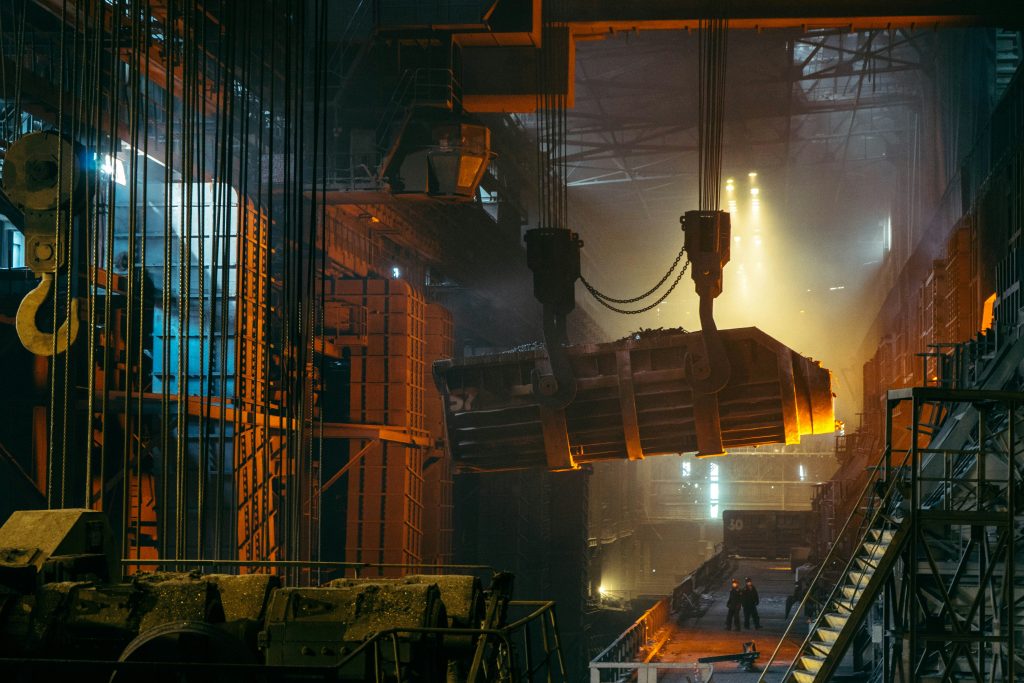Economic News
The IMF have updated their World Economic Outlook leaving global growth in 2024 unchanged from the April review at 3.2%. Growth in 2025 is increased marginally to 3.3%. The report concludes that the global economy is in a sticky spot. Services price inflation is holding up progress on disinflation, which is complicating monetary policy normalisation. First quarter growth this year surprised on the upside in many countries with the notable exception of Japan and the US. There were signs of economic recovery in Europe, led by an improvement in services activity. Chinese GDP growth rates were raised to 5.0% in 2024 and 4.5% in 2025 on the back of resurgent domestic consumption, aided by what looked to be a temporary surge in exports.
The UN Trade & Development’s latest Global Trade Update report noted that global trade trends turned positive in the first quarter of 2024, with the value of trade in goods increasing by around 1% quarter-on-quarter and services by about 1.5%. This growth was primarily driven by increased exports from China (9%), India (7%) and the US (3%).
The World Bank’s latest commodity prices review found that energy prices increased by 1.1% in June, led by natural gas (+9.9%). Raw material prices saw little change (+0.2%) while fertiliser prices surged by 9%. Metal prices contracted by 4% led by nickel (-10.7%), iron ore (-9.6%) and zinc (-5.1%).
Steel
China
The latest June 2024 crude steel production data from the WSA had global output across 71 reporting countries at 161.4 million tonnes, up 0.5% year-on-year. Chinese output for the month was estimated at 91.6 million tonnes, up 0.2% year-on-year. Outside China, other major producers that recorded year-on-year losses in June included Iran (-8.5%), South Korea (-7.2%), Japan (-4.2%), Russia (-4.1%), and the US (-1.5%). There were year-on-year gains in Brazil (+11.8%), India (+6.0%), the EU (+5.1%), and Turkey (+4.3%). The WSA estimated Chinese crude steel output in the first six months of 2024 at 530.6 million tonnes, down 1.1% year-on-year. Over the same period India’s output totalled 74.2 million tonnes, up 7.4% year-on-year, while EU production totalled 67.2 million tonnes, up 0.9% year-on-year.
The National Statistics Bureau reported that China produced 91.61 million tonnes of crude steel in June, up a marginal 0.2% year-on-year but up nearly 2% on May when measured on an average daily tonnage basis.
China imported 97.61 million tonnes of iron ore in June according to the General Administration of Customs, down 4.3% on the previous month. Iron ore imports in the first six months of 2024 totalled 611.18 million tonnes, up 6.2% year-on-year. Over the same six-month period China’s steel exports leapt 24% year-on-year to 53.4 million tonnes.
It was reported that China has approved no new coal-based steel projects in the first half of 2024 while approving 7.1 million tonnes/year of new scrap-fed electric arc furnace projects.
India
India’s Ministry of Steel was reported to have asked the trade ministry to investigate cheaper steel imports from China and Viet Nam. India has recently become a net importer of steel and domestic steel producers are apparently in talks with the federal government over trade measures to combat rising steel imports.
India’s Steel Ministry is looking to diversify its sourcing of coking coal, identifying Russia and Mongolia as key new suppliers. After discussions with industry, it is to trial two shipments from land-locked Mongolia over the next three to six months using a rail link via Russia. The ministry also wants to establish central buying of coking coal, but India’s steel sector has yet to get on board with the plan.
Power Coal
The International Energy Agency’s latest update on the coal market forecasts that coal demand is set to remain largely flat this year and next as higher electricity demand in some major economies is offset by the rapid expansion of solar and wind power. The report also notes that global use of coal rose by 2.6% in 2023 to an all-time high, driven by strong growth in the two largest coal consumers, China and India.
China
China’s coal-fired power plants generated 2,793.5 terawatt hours in the first half of 2024 according to energy specialist Ember. This represented 59.6% of China’s total electricity output, the first time on record that coal produced less than 60% of electricity production. However, the coal-fired output was still up 2.4% year-on-year.
The General Administration of Customs reported that China imported 44.6 million tonnes of coal in June, up 12% year-on-year and up from 43.82 million tonnes in May. Record high temperatures across northwest and east China has boosted demand for electricity while domestic coal supply has been running lower than last year.
China’s coal production in June rose to a six-month high of 405.38 million tonnes, up 3.6% year-on-year. The National Bureau of Statistics also reported that production in the first six months of this year totalled 2.27 billion tonnes, down by 1.7% year-on-year.
India
India’s Central Electricity Authority has carried out generation planning studies through to the financial year 2031-32. To meet its base load requirement in 2032, the required coal and lignite-based installed capacity would be 283 GW against the present installed capacity 0f 217.5 GW. Given this, the government proposes to set up an additional minimum 80 GW of coal-based capacity by 2031-32.
The Power Minister in India was reported to have asked power companies to order $33 billion of coal-fired power equipment this year to help meet booming electricity demand. This would result in record tendering to help add 31 gigawatts of new capacity in the next 5-6 years.
The Ministry of Coal reported that India produced 247.40 million tonnes of coal in 2Q24, up 10.75% year-on-year
Aluminium
The International Aluminium Institute reported that global primary aluminium production in June rose 3.2% year-on-year to total 5.940 million tonnes, with 59.4% produced in China. Global production in the first six months of this year totalled 38.838 million tonnes, up 3.9% year-on-year. The IAI also reported that global alumina production in June totalled 11.922 million tonnes, up 0.8% year-on-year. Global alumina production from January to June 2024 totalled 70.965 million tonnes, up 2.3% year-on-year.
Guinea – Winning International Group is reported to have ordered six 325,000 dwt very large ore carriers (VLOCs) from Hengli Heavy Industry at a cost of $116 million per vessel for employment in the Guinea to China bauxite trade. Delivery is set to start in the second half of 2027. The ships are reported to be fitted with methanol fuel tanks.
Indonesia is reported to be planning to review its bauxite export ban imposed in mid-2023 to encourage more domestic processing. During a meeting with the mining minister, lawmakers asked the government to reassess the ban and reopen shipments to help revive the economies of areas that rely on bauxite mining.
Agribulk
The latest edition of the OECD-FAO Agricultural Outlook has been published looking at medium-term prospects for agricultural commodity markets from 2024 to 2033. India and Southeast Asian countries are projected to account for 31% of global consumption growth by 2033, driven by their growing urban population and increasing affluence. Total agricultural and fisheries consumption is projected to grow by 1.1% annually over the next decade. The volumes of agricultural commodities traded globally is expected to increase between net exporting regions and net importing regions, but with regional shifts reflecting increased consumption in India and Southeast Asia.
Data released during Indian Prime Minister Modi’s meeting with President Putin in Moscow showed that India increased its imports of Russian grain and grain products 22-fold in the 2023/24 agricultural season. As noted later, Modi also thanked Russia for providing a stable supply of fertilisers to Indian farmers. A joint statement after the talks set out that Russia and India aim to boost bilateral agriculture and fertiliser trade further, pledging to ease the existing phytosanitary and veterinary barriers.
The Indian government plans to sell wheat from state reserves to bulk purchasers such as flour millers and biscuit makers from August at below prevailing market prices in a bid to keep a lid on local consumer prices.
India’s rice stocks at state warehouses jumped to 48.51 million tonnes at the start of July according to the Food Corporation of India. This was up nearly 19% year-on-year and a record high for this time of year. This has led to speculation that the government is likely to cut the minimum export price floor for basmati rice to boost shipments.
Russia was reported to have made its first grain export shipment from the Lugaport terminal in the Baltic Sea port of Ust-Luga. The new terminal is owned by the Russian private transport company Novotrans and is expected to have an annual grain export capacity of 7 million tonnes. Up until now, most Russian grain exports from the Baltic Sea have been made from the 4 million tonnes/year Vysotsk terminal which made its first shipment in April 2023.
Ukraine’s grain exports via the Romanian port of Constanta in the first half of 2024 fell by 43.5% year-on-year to 4.24 million tonnes, according to the port authority. However, the fall was also a reflection of Ukraine shipping out more grain from its own Black Sea ports using the navigational channel hugging the western Black Sea coast off Romania and Bulgaria.


